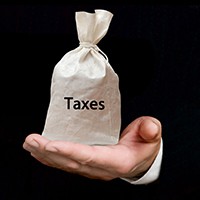Last updated: May 31 2016
Good News on Deferring Recapture of Capital Cost Allowance

When a depreciable asset is disposed of and the result is a negative balance in the CCA class, that negative balance is normally included in the taxpayer’s income (as recapture of CCA) in the year of disposition.
However, Section 1103 of the Income Tax Regulations allows the taxpayer to elect to transfer the property from certain classes to another class. If the property is transferred to a class with a higher balance (UCC) before the disposition or to a class to which another asset is added, the result will be to defer that recapture until assets in the new class are disposed or and create a negative UCC balance.
Example: Replacement of a Building
 |
ABC Corp replaced their class 3 building with a building that must be included in class 1. The cost of the old building was $300,000 and, through CCA claims, the class 3 balance had been reduced to $50,000. The building was sold for $250,000. The cost of the replacement building was $1,000,000. With no election, the lesser of the costs and proceeds of the old building would have to be subtracted from class 3, resulting in a negative balance of $200,000. This recapture would have to be include in income in the year of disposition.
However, Regulation 1103(1) allows the company to elect to include any assets in classes 2 through 10, 11, and 12 in class 1. Thus ABC Corp may elect to include the old building in class 1. The class 1 balance before the disposition would be $50,000. Taking into account the proceeds of disposition of the old building, plus the addition of the new building, would result in a UCC of $800,000 ($50,000 - $250,000 + $1,000,000) before any claims for CCA for the year. Thus no recapture would be included in income as a result of the disposition. Recognition of the recapture is deferred until the new building is disposed of.
Additional educational resources include T1 Professional Tax Preparation – Proprietorships course. Click here to find out more or call 1-866-953-4769.





